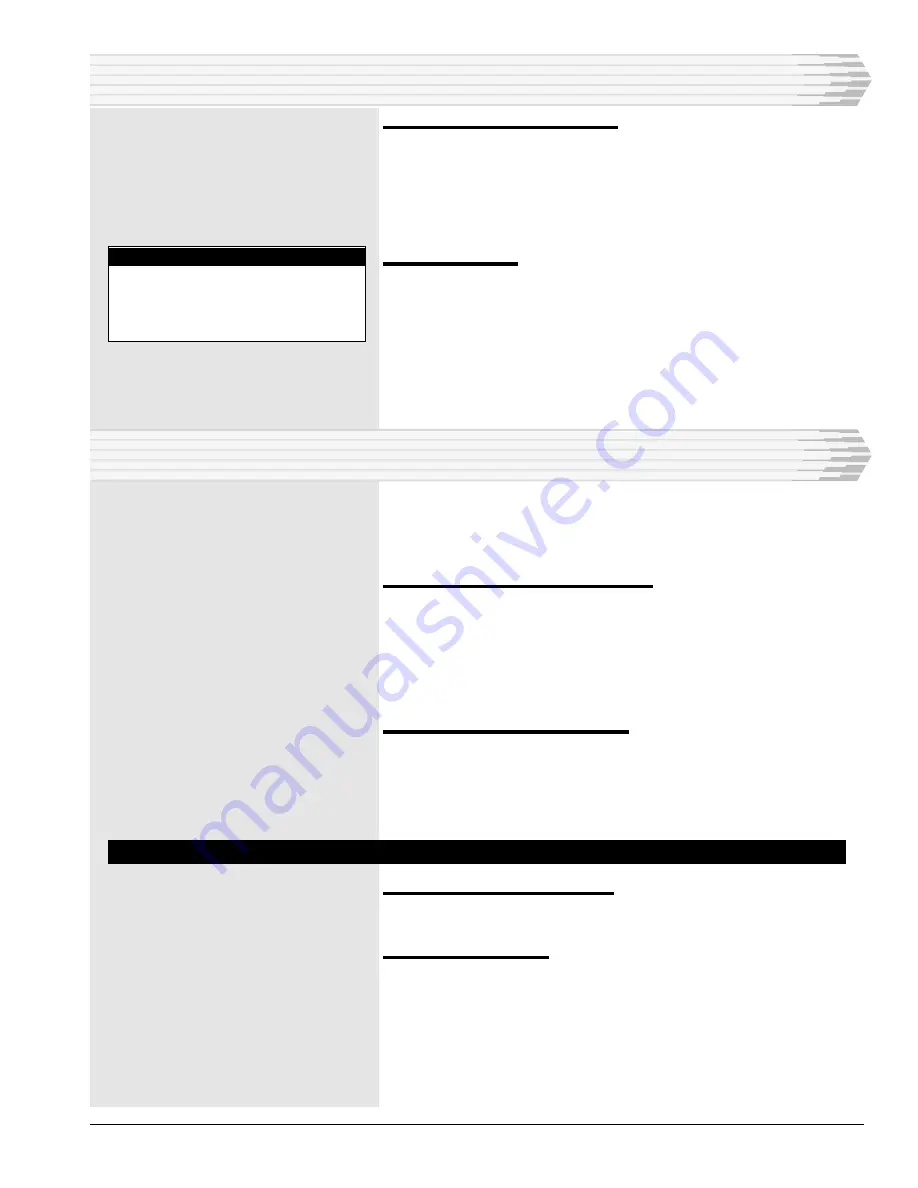
44214-0898 <90-00005>
P
AGE
5
Asynchronous Serial Interface
The asynchronous serial interface provides the drivers and
switching capability to support RS232, RS422, RS485, or TTL
communication. The selection of interface is accomplished using
S6. There is an LED display which indicates activity on the
TXD, RXD, CTS, RTS, DTR, and CD lines.
Analog Interface
The analog interface provides the 2 or 4-wire circuitry necessary
to communicate with the modem controller. A two-position
switch (S7) selects 2-wire or 4-wire operation. Transmit and
receive levels are independently adjustable from the front panel.
XMT and RCV levels are adjustable from -40dBm to 0dBm.
CIRCUIT DESCRIPTION
N
OTE
:
For 2-Wire operation, the trans-
mit level will adjust itself to the
best level between -30dBm and
0dBm.
INSTALLATION
I
nstallation consists of setting the switch and strap settings,
wiring the pin connectors, installing the module in the shelf,
and checking out the module.
1. Set the switch and strap settings
Set switches with the on-board slide switches, mini-DIPs or
recessed front panel slide switches. Refer to Fig. 2, Fig. 3, and
Table A.
Set straps with the on-board mini-jumpers. Refer to Fig. 3 and
Table B.
2. Install the module in the shelf
Install the module in the proper slot by sliding the module along
the guide slots, then firmly seating the edge connector in its
receptacle.
A
LIGNMENT
P
ROCEDURE
Set modem to Originate Mode
Set Switch 4, accessible through the front panel, to ORG.
Adjust transmit level
Connect a 600 ohm terminated dB meter to the module.
Connection can be made at either of two places. A mini-plug
can be inserted into the front panel jack labeled 4W MON or
the meter can be connected to the 44214’s edge connector at
pins 40 and 39.
































